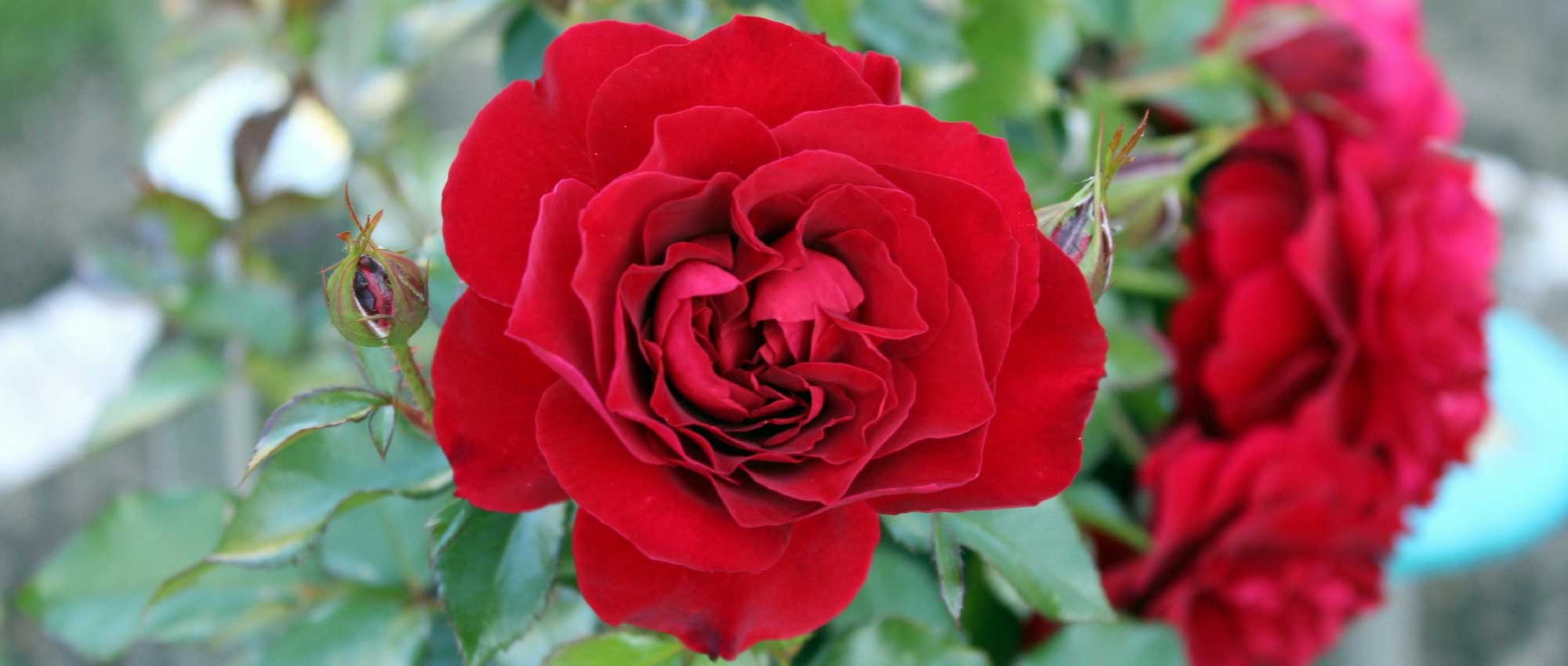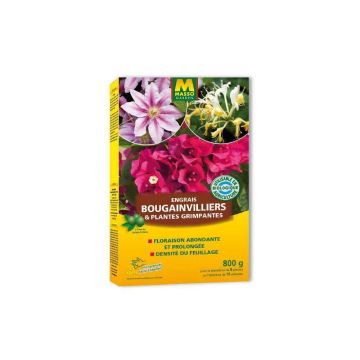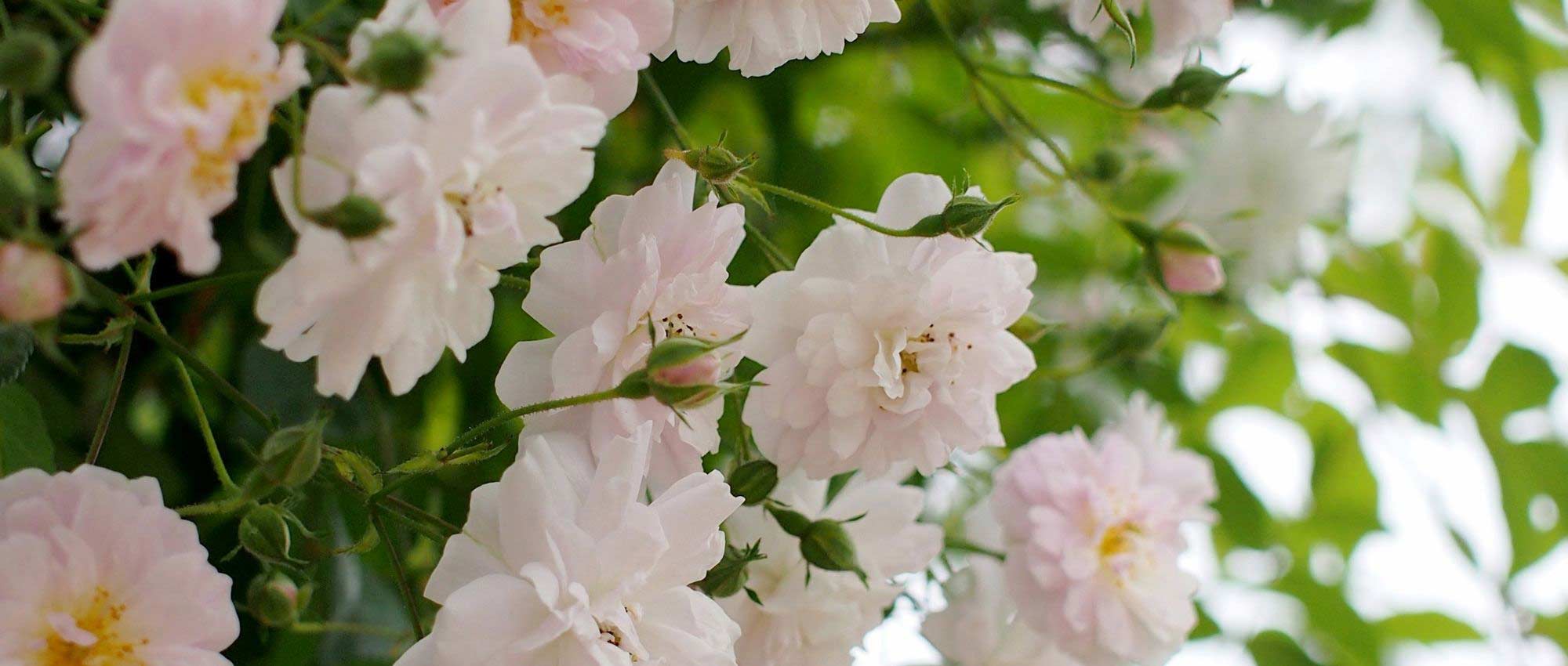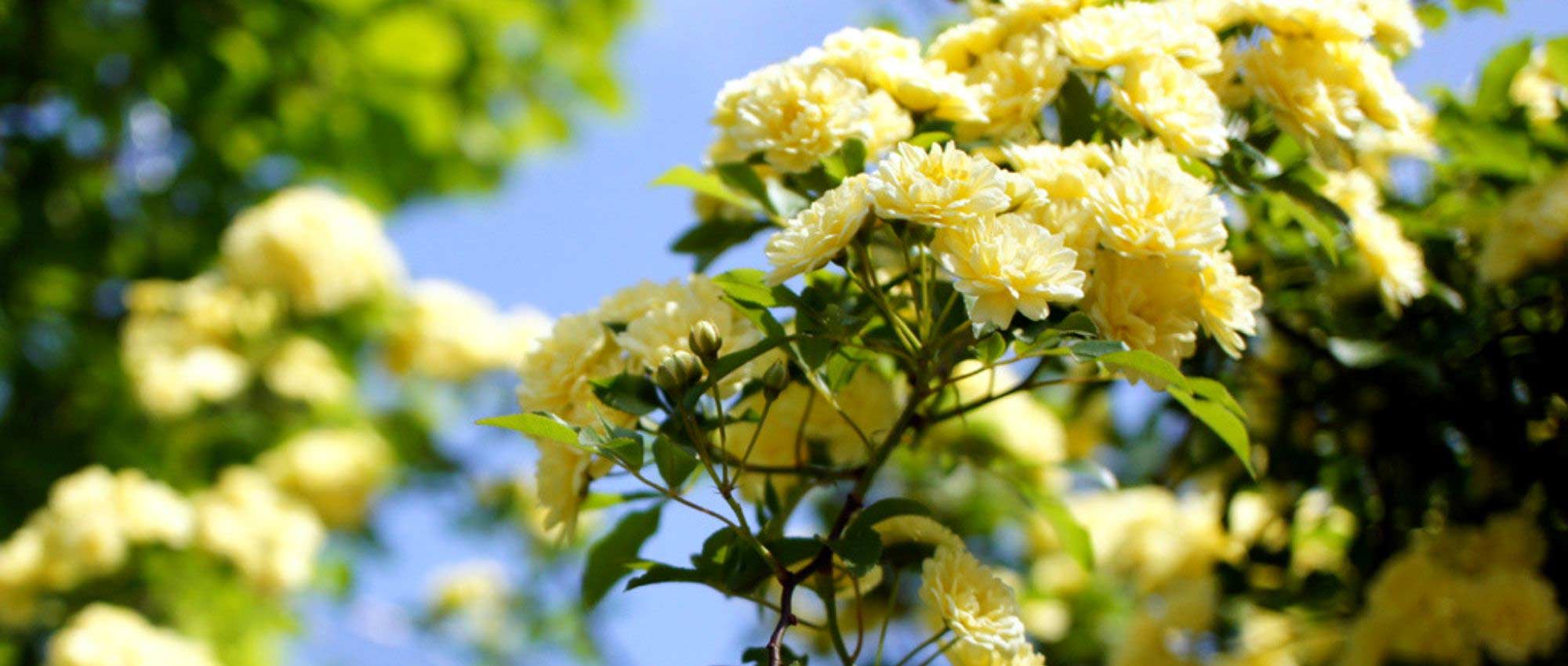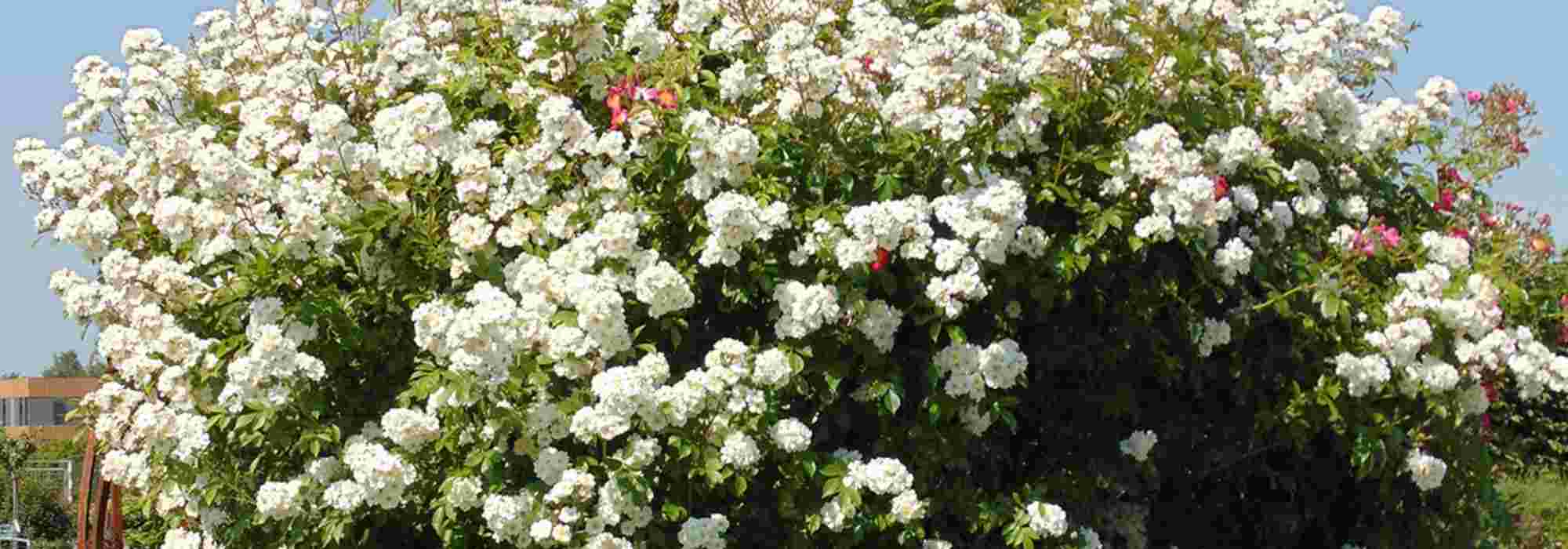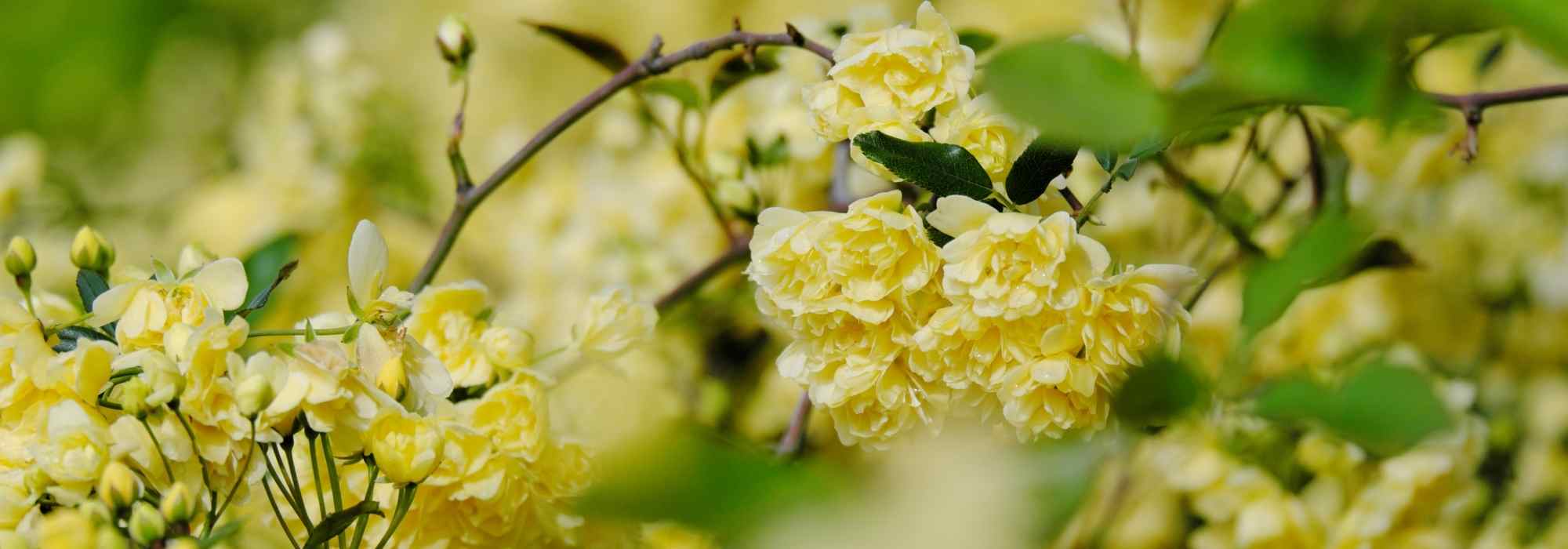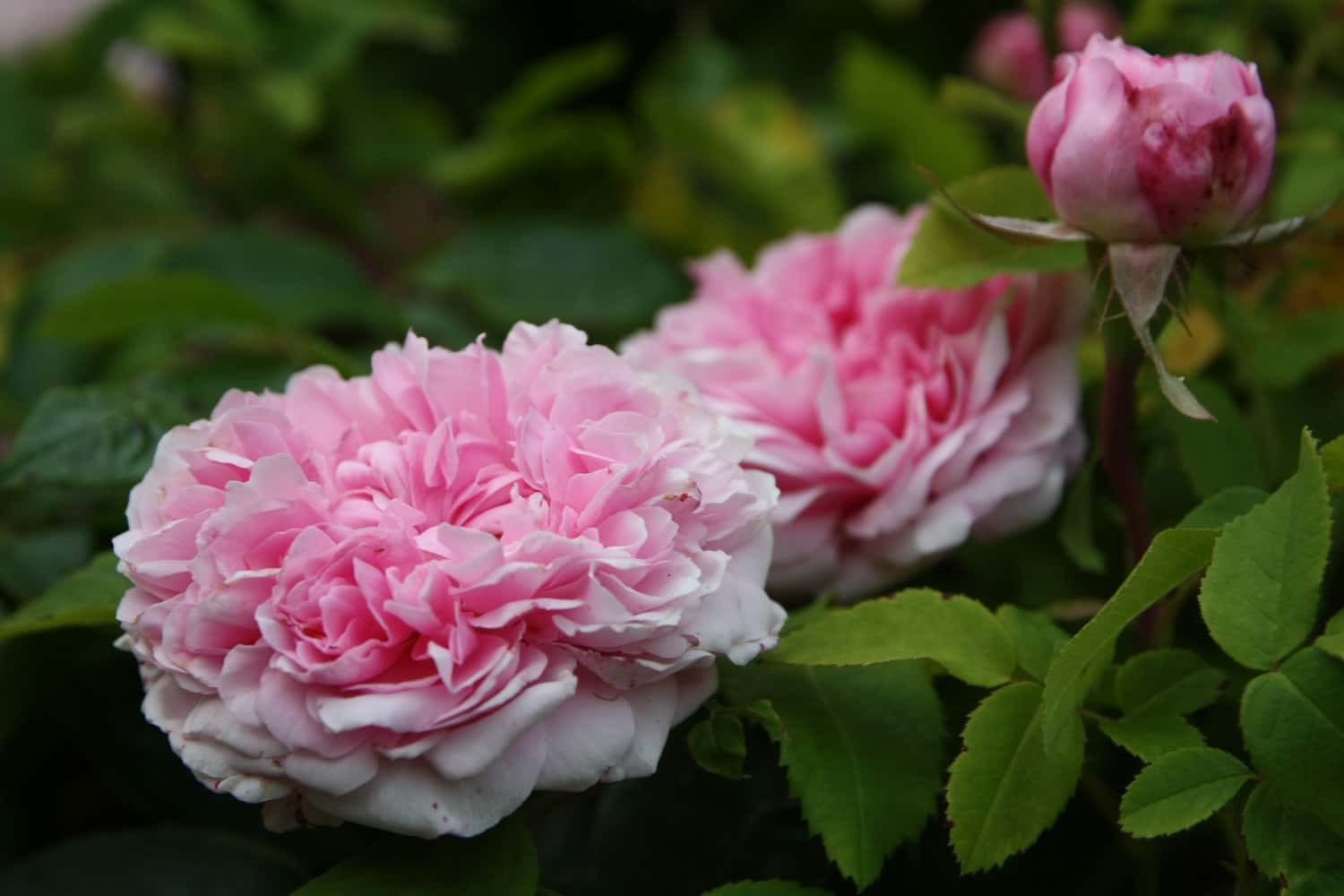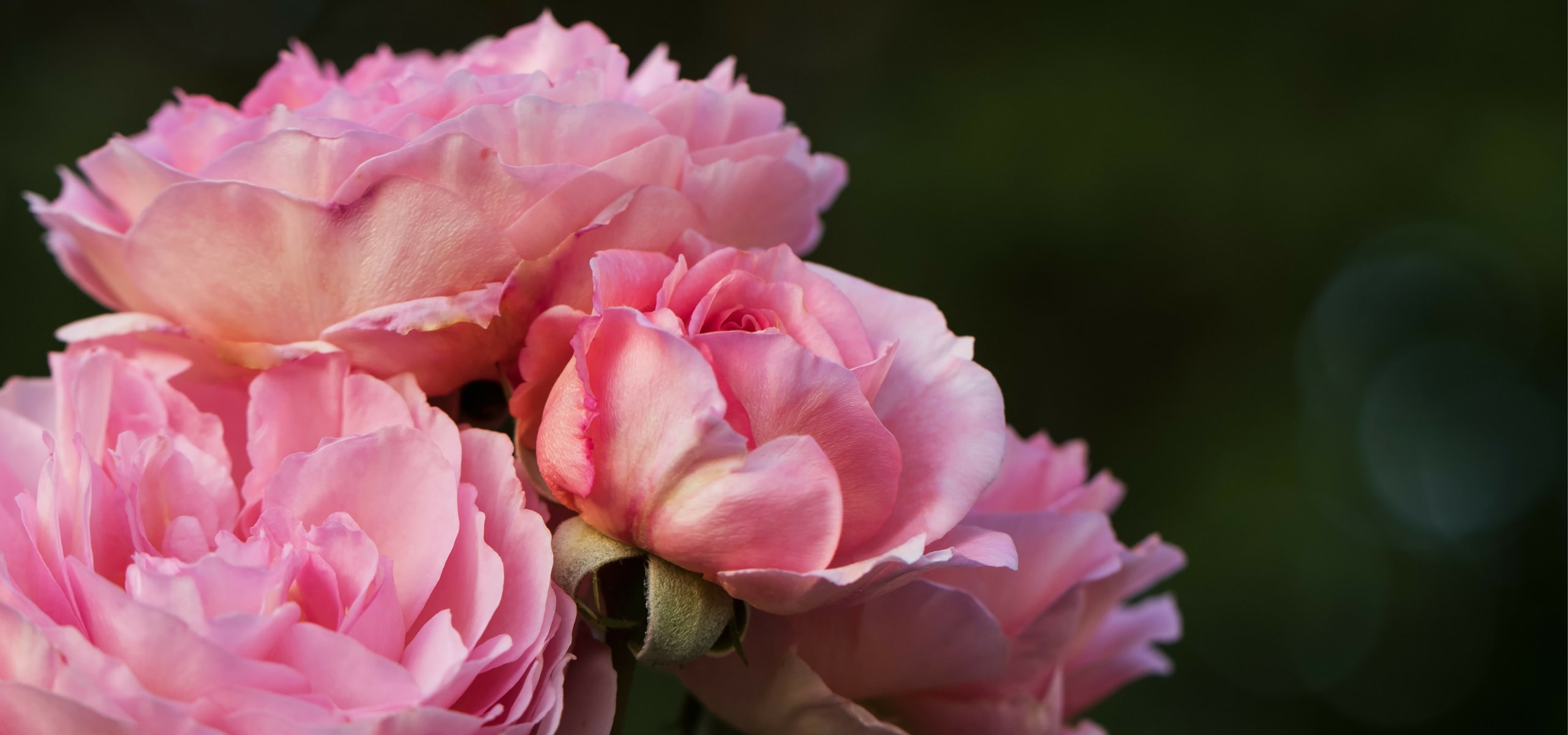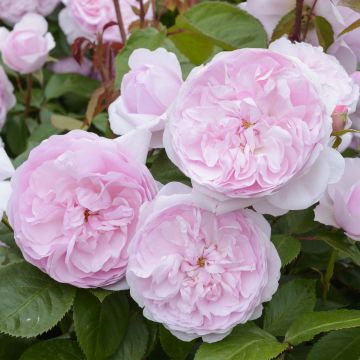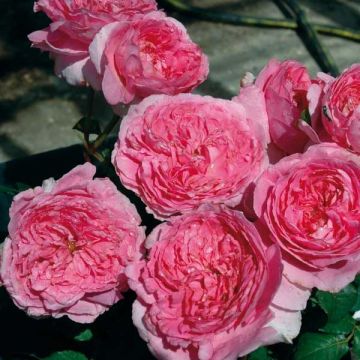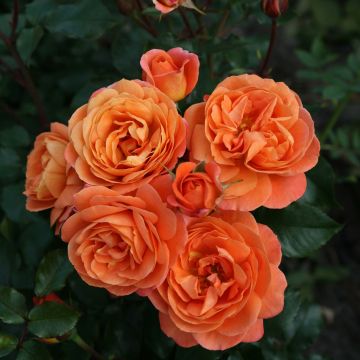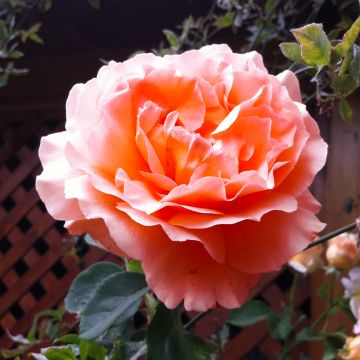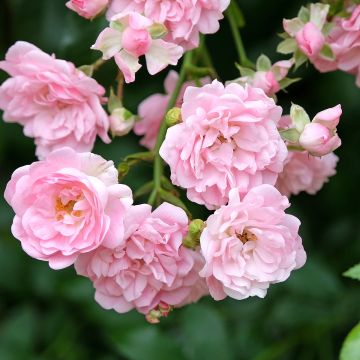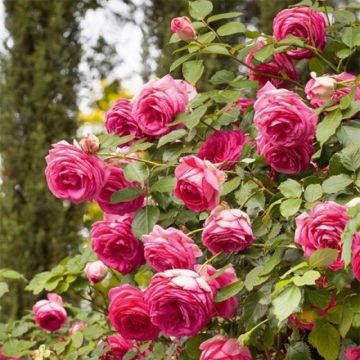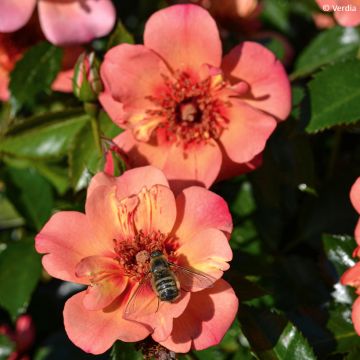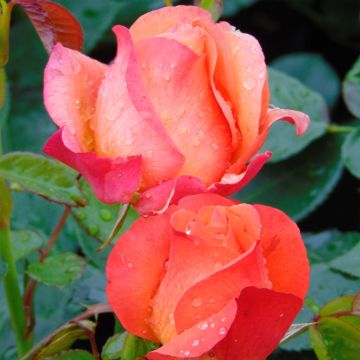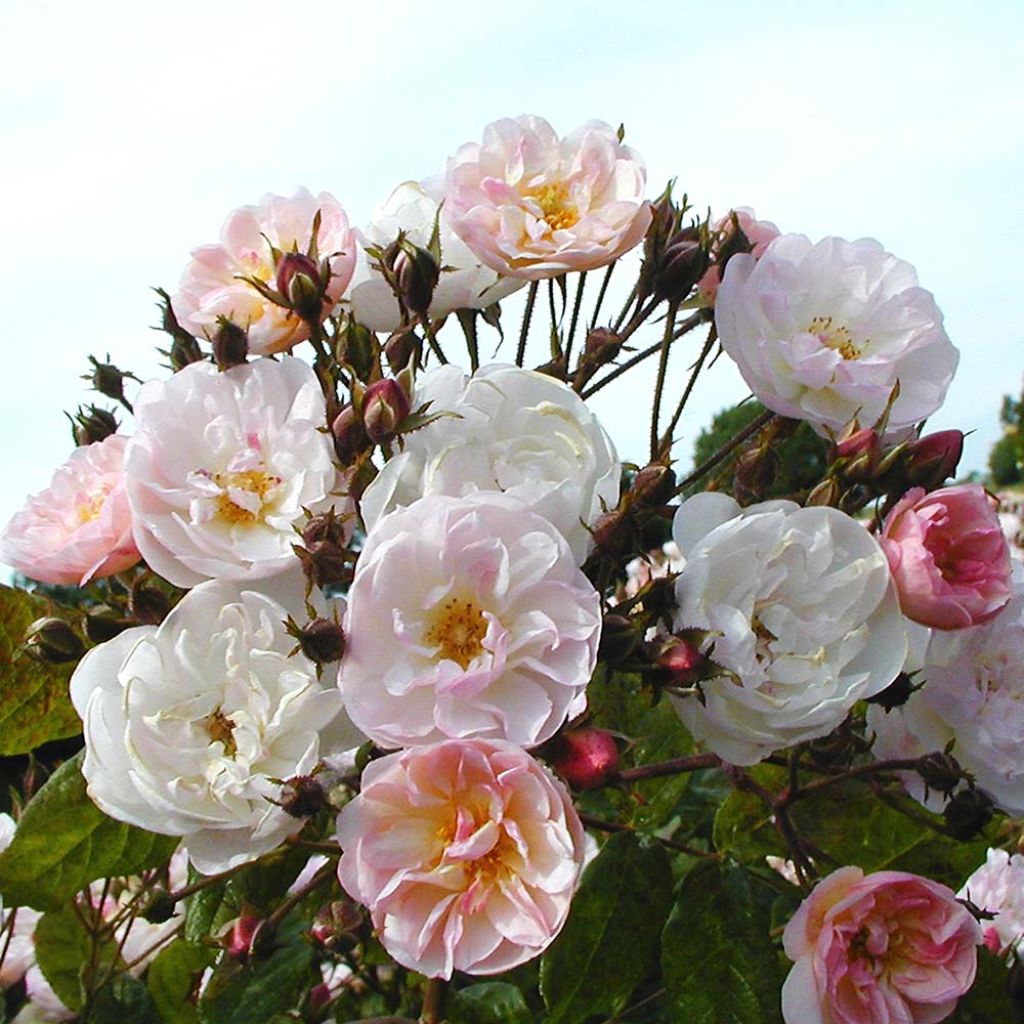

Rosa x filipes 'Dentelle de Malines' - Rambling Rose
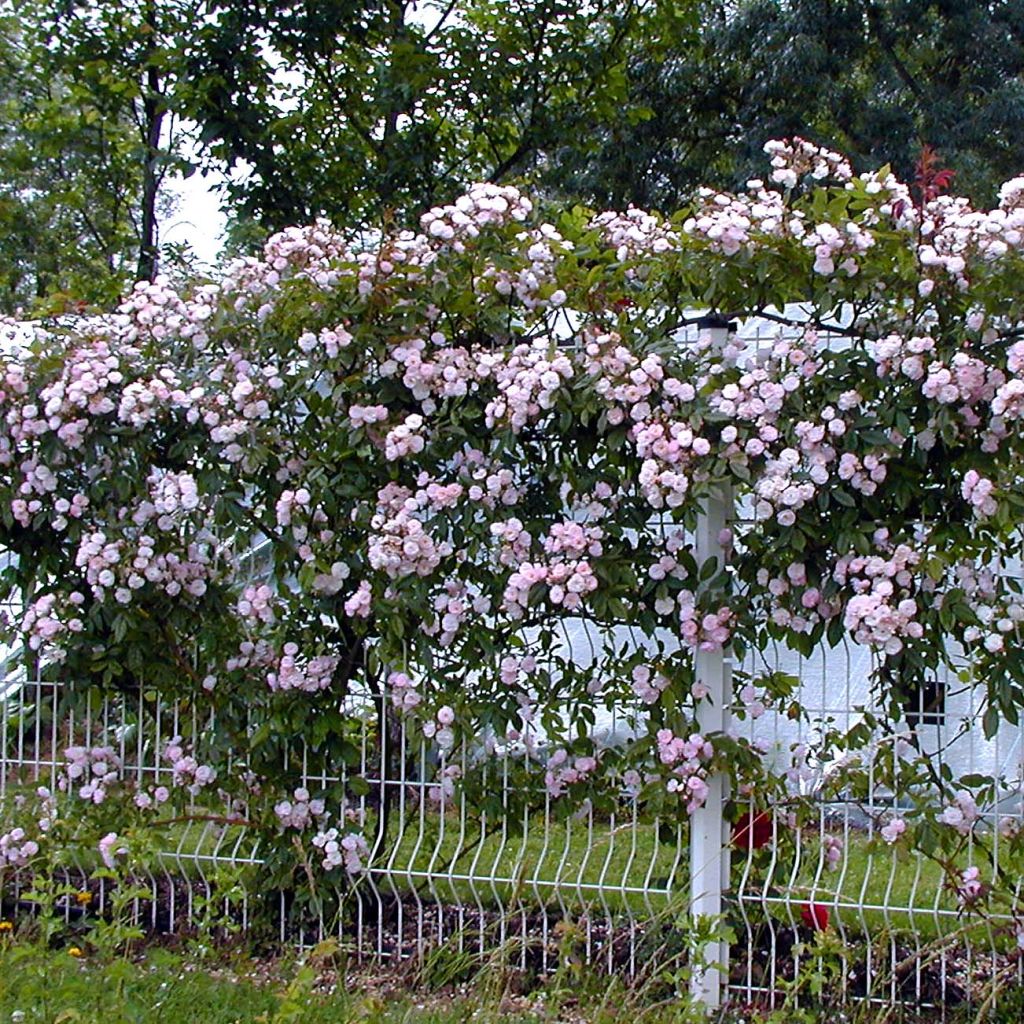

Rosa x filipes 'Dentelle de Malines' - Rambling Rose
Rosa x filipes 'Dentelle de Malines' - Rambling Rose
Rosa x filipes Dentelle de Malines® lenfiro
Lenfiro
Rosebush received in very good condition. I planted it late and in a not so obvious spot, so it hasn't grown much this year. I hope it will show all its vigor next spring and amaze me with its delicate little roses!
ChristineH, 21/10/2020
Special offer!
Receive a €20 voucher for any order over €90 (excluding delivery costs, credit notes, and plastic-free options)!
1- Add your favorite plants to your cart.
2- Once you have reached €90, confirm your order (you can even choose the delivery date!).
3- As soon as your order is shipped, you will receive an email containing your voucher code, valid for 3 months (90 days).
Your voucher is unique and can only be used once, for any order with a minimum value of €20, excluding delivery costs.
Can be combined with other current offers, non-divisible and non-refundable.
Home or relay delivery (depending on size and destination)
Schedule delivery date,
and select date in basket
We guarantee the quality of our plants for a full growing cycle, and will replace at our expense any plant that fails to recover under normal climatic and planting conditions.
Description
The 'Dentelle de Malines' Rose is a very healthy rose with a single, active and spectacular flowering, but it is also a refined and charming plant that can adapt to any desire. Capable of climbing over 4m (13ft) in height, this true rambling rose can become a large bush or even an astonishing ground cover that sprawls if pruned correctly Whatever its use, it is always perfect, and every year, we eagerly await the subtly scented flowering that makes it disappear under enormous bouquets of small semi-double flowers with pink and white mother-of-pearl petals.
The 'Dentelle de Malines' Rose, of old-fashioned style, is a modern creation by the Belgian rose breeder Louis Lens, dating back to 1986 results from the cross-breeding of Rosa filipes, a botanical rambling rose originating from the northwest of the Sichuan Province in western China, and the hybridisation of the roses 'Robin Hood' and 'Baby Faurax'.
The 'Dentelle de Malines', also known as 'Lens Pink' or 'LENfiro', can produce long shoots of 3 to 5 to 6m (10 to 16ft), depending on the growing conditions. Pruned yearly at the end of winter, it will form a large bush with an average spread of 3m (10ft) in all directions. Its size will naturally depend on how it is trained: as a large ground cover, it will spread its long stems of 3 to 5m (10 to 16ft) in all directions at the beginning of the rambling rose season in May-June, its incredible flowering appears, lasting several weeks in cool climates. Grouped in huge bouquets, pretty pink buds open into small semi-double rosettes that range from pink to white, dotted with a bouquet of golden yellow stamens. Each flower measures about 5cm (2in) in diameter and exhales a sweet and peppery fragrance. The foliage, deciduous to semi-evergreen depending on the climate, is divided into long leaflets of a glossy dark elegance, especially since the plant resists common rose diseases. The 'Dentelle de Malines' rose tolerates semi-shaded exposures well.
'Dentelle de Malines' is an enchanting rose that rivals the beauty of Japanese cherry trees but surpasses them in terms of the duration of its flowering. Not demanding and blessed with good health, it will thrive in all areas but shows more vigour in fertile soil. Like other ramblers (Paul's Himalayan Musk, Sander's White Rambler), it is incomparable for decorating hedges and giving a slightly abandoned look when planted above overly strict flowerbeds. It can also be used as a ground cover, thanks to its exemplary foliage and floribundity. In this usage, it will create an exceptional springtime display. It is an ideal companion for old trees that will update the look of fences, ugly buildings or sheds. Trained on a large arch near the terrace, it will create a romantic and fragrant passage. As its flowering is relatively early, it can be paired with a clematis with large flowers whose summer flowering will take over until autumn.
Rosa x filipes 'Dentelle de Malines' - Rambling Rose in pictures
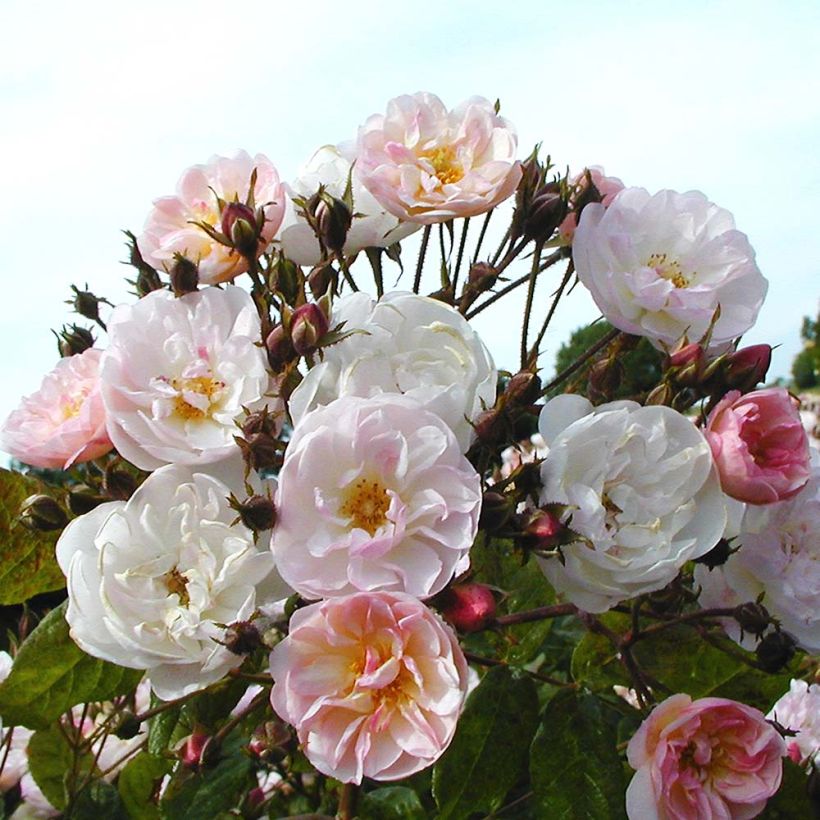

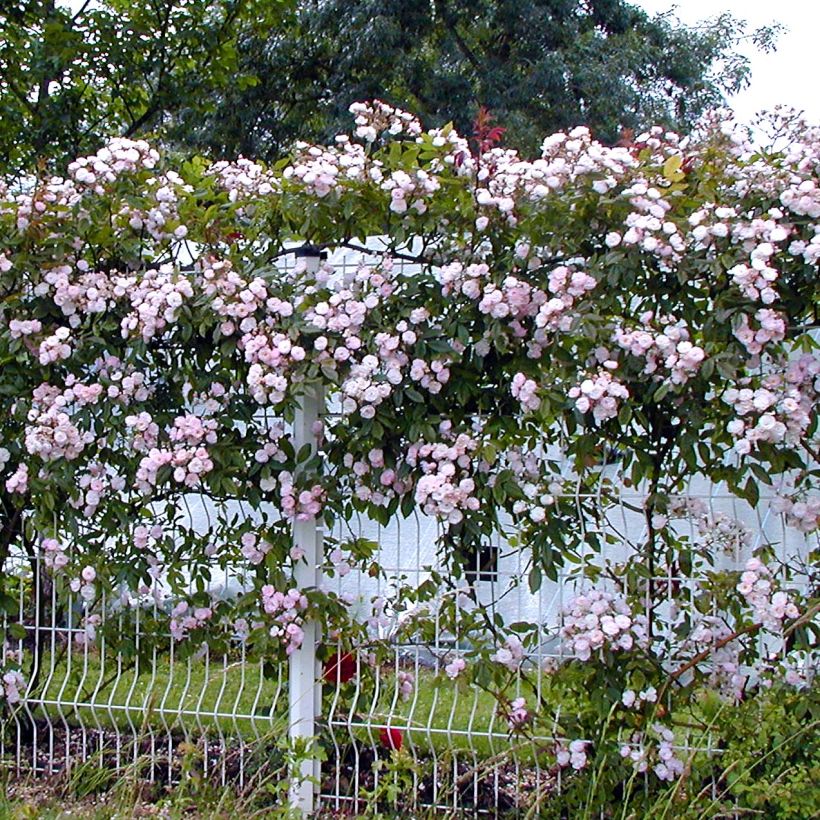

Plant habit
Flowering
Foliage
Botanical data
Rosa
x filipes
Dentelle de Malines® lenfiro
Rosaceae
Lenfiro
Cultivar or hybrid
Rosa canina Laxa (Wrapped bare root)
Planting and care
The 'Dentelle de Malines' Rose is a plant that can grow well in different types of soil, as long as it is taken care of properly. To grow well, the plant needs enough water and nutrients. You should plant it in well-prepared soil that drains well, in a sunny or partially shaded area. It's best to plant it in autumn, but avoid planting it when it's freezing outside. If you plant it in the shade of a tree, it may take longer to grow.
To help the plant grow, you should prune the stems that flowered the year before down to 3 or 4 buds, or cut them to 15 cm (6in). The new sturdy stems will be trained, and the old ones removed if necessary. This rose is quite hardy and can withstand temperatures as low as -20°C (-4°F). If the branches freeze to the ground after a harsh winter, the plant will regrow from the base in spring. In winter, it may be necessary to prune dead wood, and faded flowers should be removed if you don't want hips. In the spring, after the risk of frost has passed, you can do a light pruning if necessary. Alternatively, you can let climbing roses grow freely if you have ample space.
If you plant a climbing rose next to a living tree, the rose's root system may compete with the tree's. To prevent this, you can plant the rose in a large container with a perforated and split bottom at the base of the tree, making sure to place the split opposite the tree trunk. This way, the tree roots will not penetrate the container for at least a year. After one year, remove the container without disturbing the rose roots. By then, the rose will have developed its root system deeply and will be more resistant.
Roses may develop unsightly spots at the end of summer, but this is a natural occurrence and doesn't harm the rose's growth.
Planting period
Intended location
Care
Planting & care advice
-
, onOrder confirmed
Reply from on Promesse de fleurs
Similar products
Haven't found what you were looking for?
Hardiness is the lowest winter temperature a plant can endure without suffering serious damage or even dying. However, hardiness is affected by location (a sheltered area, such as a patio), protection (winter cover) and soil type (hardiness is improved by well-drained soil).

Photo Sharing Terms & Conditions
In order to encourage gardeners to interact and share their experiences, Promesse de fleurs offers various media enabling content to be uploaded onto its Site - in particular via the ‘Photo sharing’ module.
The User agrees to refrain from:
- Posting any content that is illegal, prejudicial, insulting, racist, inciteful to hatred, revisionist, contrary to public decency, that infringes on privacy or on the privacy rights of third parties, in particular the publicity rights of persons and goods, intellectual property rights, or the right to privacy.
- Submitting content on behalf of a third party;
- Impersonate the identity of a third party and/or publish any personal information about a third party;
In general, the User undertakes to refrain from any unethical behaviour.
All Content (in particular text, comments, files, images, photos, videos, creative works, etc.), which may be subject to property or intellectual property rights, image or other private rights, shall remain the property of the User, subject to the limited rights granted by the terms of the licence granted by Promesse de fleurs as stated below. Users are at liberty to publish or not to publish such Content on the Site, notably via the ‘Photo Sharing’ facility, and accept that this Content shall be made public and freely accessible, notably on the Internet.
Users further acknowledge, undertake to have ,and guarantee that they hold all necessary rights and permissions to publish such material on the Site, in particular with regard to the legislation in force pertaining to any privacy, property, intellectual property, image, or contractual rights, or rights of any other nature. By publishing such Content on the Site, Users acknowledge accepting full liability as publishers of the Content within the meaning of the law, and grant Promesse de fleurs, free of charge, an inclusive, worldwide licence for the said Content for the entire duration of its publication, including all reproduction, representation, up/downloading, displaying, performing, transmission, and storage rights.
Users also grant permission for their name to be linked to the Content and accept that this link may not always be made available.
By engaging in posting material, Users consent to their Content becoming automatically accessible on the Internet, in particular on other sites and/or blogs and/or web pages of the Promesse de fleurs site, including in particular social pages and the Promesse de fleurs catalogue.
Users may secure the removal of entrusted content free of charge by issuing a simple request via our contact form.
The flowering period indicated on our website applies to countries and regions located in USDA zone 8 (France, the United Kingdom, Ireland, the Netherlands, etc.)
It will vary according to where you live:
- In zones 9 to 10 (Italy, Spain, Greece, etc.), flowering will occur about 2 to 4 weeks earlier.
- In zones 6 to 7 (Germany, Poland, Slovenia, and lower mountainous regions), flowering will be delayed by 2 to 3 weeks.
- In zone 5 (Central Europe, Scandinavia), blooming will be delayed by 3 to 5 weeks.
In temperate climates, pruning of spring-flowering shrubs (forsythia, spireas, etc.) should be done just after flowering.
Pruning of summer-flowering shrubs (Indian Lilac, Perovskia, etc.) can be done in winter or spring.
In cold regions as well as with frost-sensitive plants, avoid pruning too early when severe frosts may still occur.
The planting period indicated on our website applies to countries and regions located in USDA zone 8 (France, United Kingdom, Ireland, Netherlands).
It will vary according to where you live:
- In Mediterranean zones (Marseille, Madrid, Milan, etc.), autumn and winter are the best planting periods.
- In continental zones (Strasbourg, Munich, Vienna, etc.), delay planting by 2 to 3 weeks in spring and bring it forward by 2 to 4 weeks in autumn.
- In mountainous regions (the Alps, Pyrenees, Carpathians, etc.), it is best to plant in late spring (May-June) or late summer (August-September).
The harvesting period indicated on our website applies to countries and regions in USDA zone 8 (France, England, Ireland, the Netherlands).
In colder areas (Scandinavia, Poland, Austria...) fruit and vegetable harvests are likely to be delayed by 3-4 weeks.
In warmer areas (Italy, Spain, Greece, etc.), harvesting will probably take place earlier, depending on weather conditions.
The sowing periods indicated on our website apply to countries and regions within USDA Zone 8 (France, UK, Ireland, Netherlands).
In colder areas (Scandinavia, Poland, Austria...), delay any outdoor sowing by 3-4 weeks, or sow under glass.
In warmer climes (Italy, Spain, Greece, etc.), bring outdoor sowing forward by a few weeks.






























